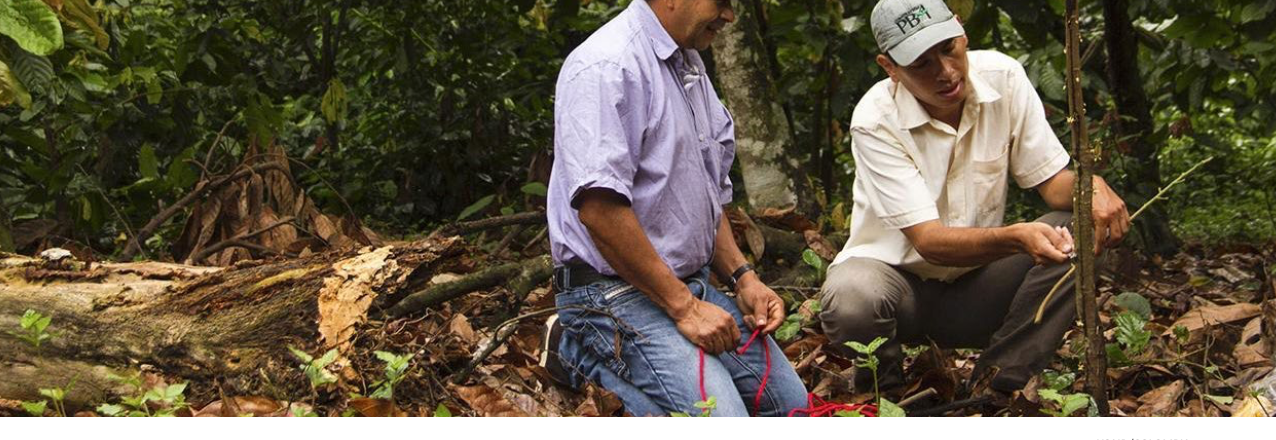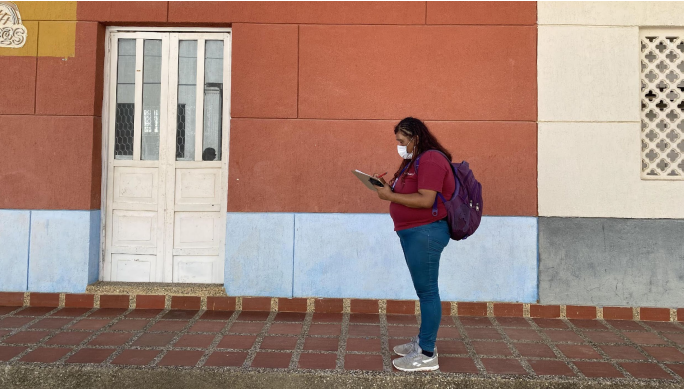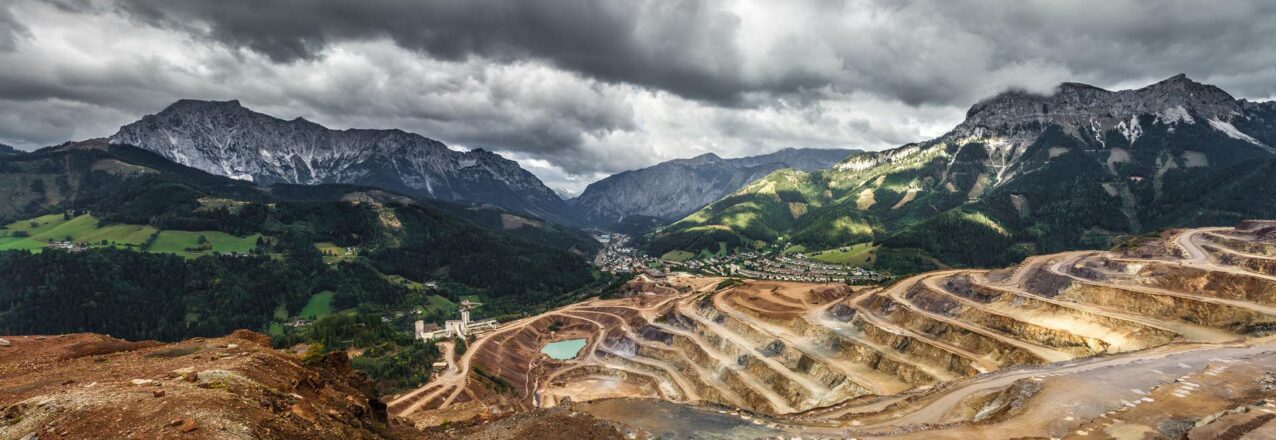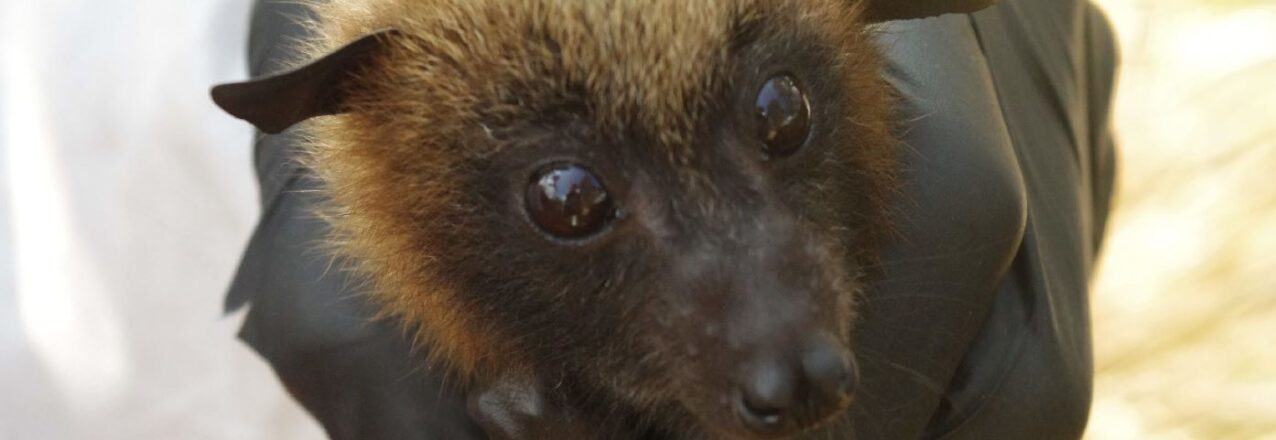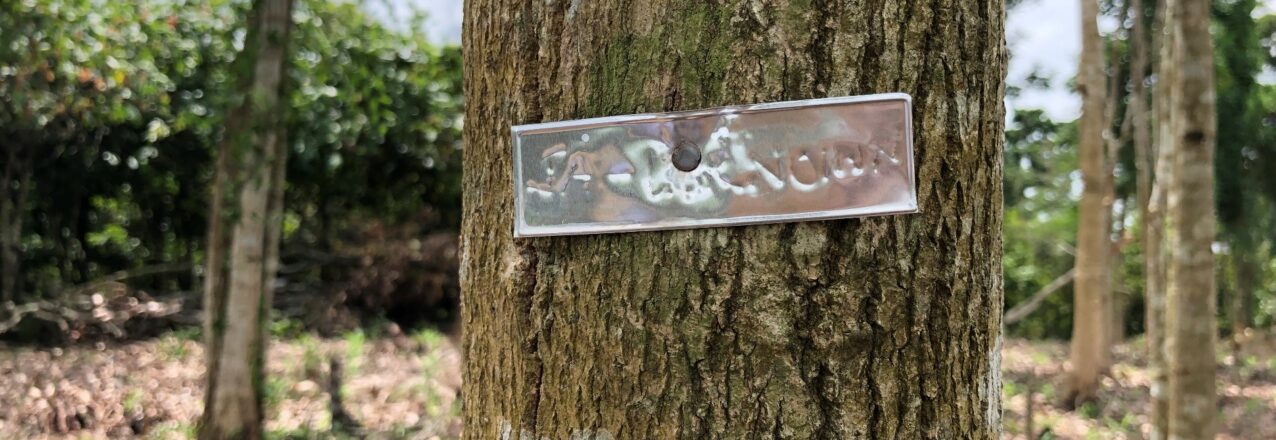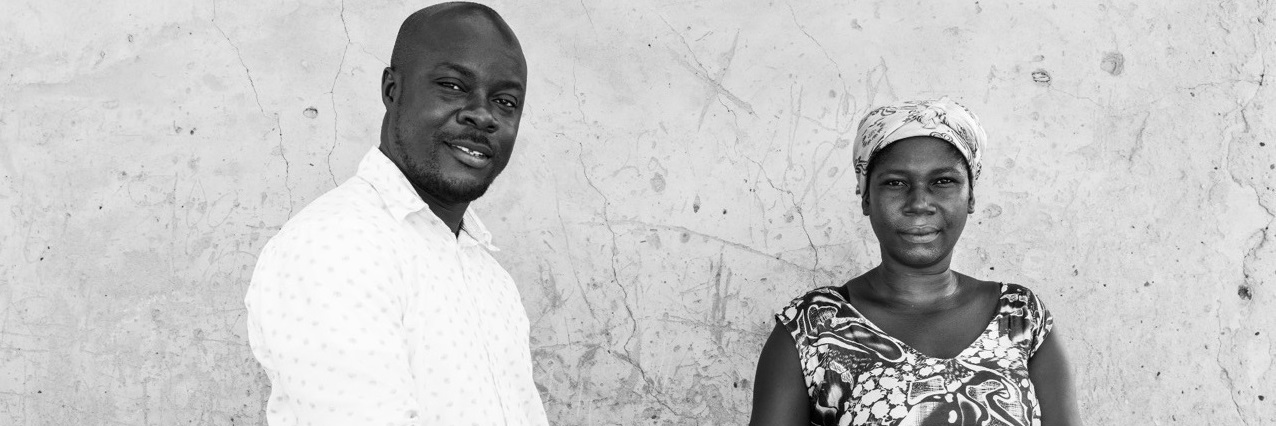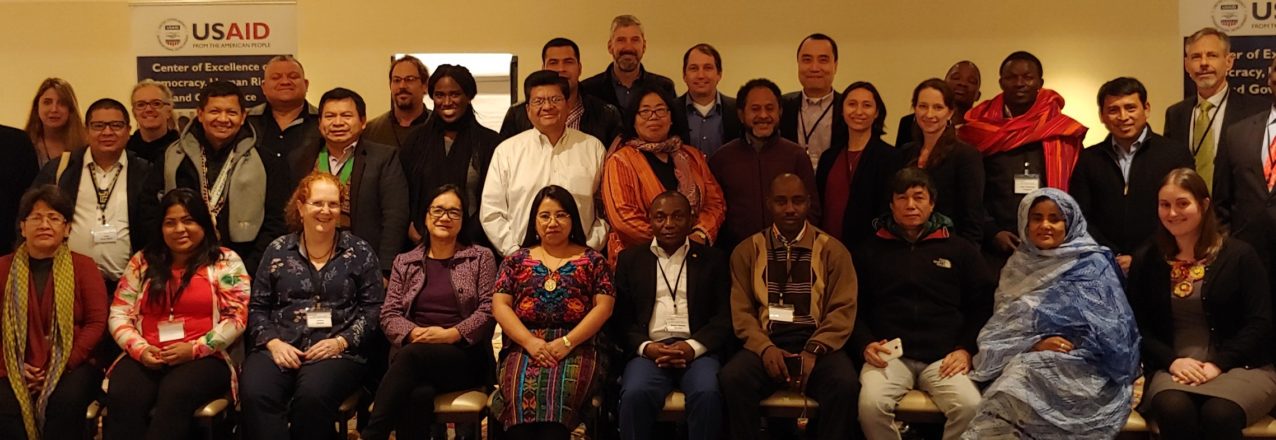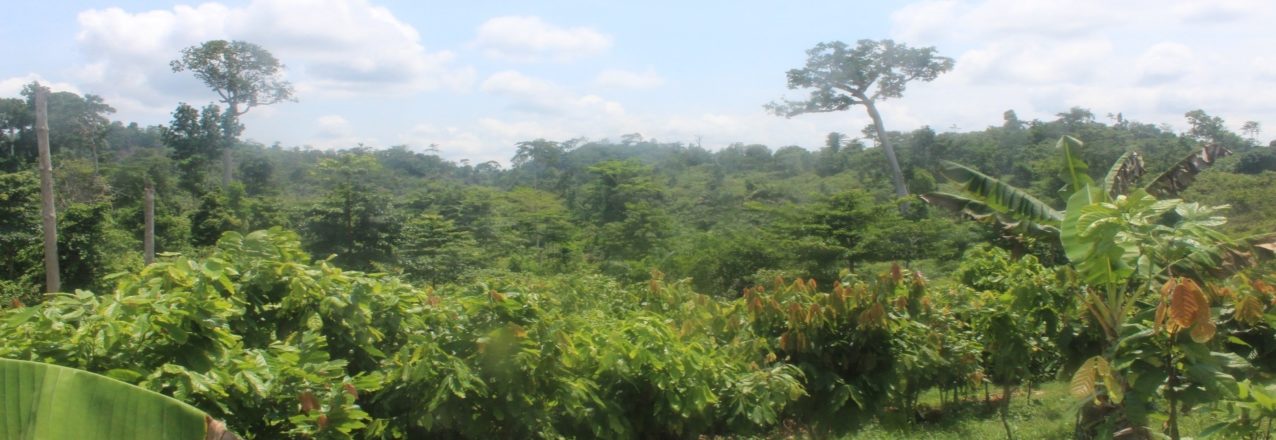Executive Summary
The Integrated Land and Resource Governance (ILRG) task order under the Strengthening Tenure and Resource Rights II (STARR II) Indefinite Delivery/Indefinite Quantity (IDIQ) contract provides support to the United States Agency for International Development’s (USAID) Land and Urban Office in the Bureau for Economic Growth, Education, and Environment (E3/LU). ILRG develops and implements targeted interventions in select USAID presence and non-presence countries, providing technical assistance to improve land and resource governance, strengthen property rights, and build resilient livelihoods as the foundation for stability, resilience, and strong economic growth.
Context
Ghana and Cote d’Ivoire together produce two-thirds of the world’s cocoa. Cocoa plays a critically important role in local and national economies, providing jobs, improved livelihoods and social welfare, expanded tax base, family and corporate income, and foreign exchange earnings growth. However, the long-term viability of cocoa farming is at risk in many parts of Ghana and Cote d’Ivoire due to a number of factors, including climate change.1 For many years, smallholder cocoa has been the leading agricultural commodity driving deforestation in both countries. This deforestation increases greenhouse gas (GHG) emissions and has a negative impact on biodiversity, soil fertility, and water quality and quantity; affects local rainfall; and threatens farmer livelihoods. In response, the governments of both countries and commodity buyers have made specific commitments to reduce and eliminate deforestation from their supply chains through the creation of initiatives such as the Cocoa and Forests Initiative and the Ghana Cocoa Forest REDD+ Programme (GCFRP) that will sell carbon credits to the Forest Carbon Partnership Facility.
Declining productivity of cocoa farms represents an additional challenge facing the West African cocoa sector. In Ghana, up to 40 percent of cocoa farms have low productivity and the Ghana Cocoa Board (Cocobod) estimates that 700,000 hectares (ha) of cocoa farms need to be replanted. Several challenges to large-scale farm rehabilitation exist. Farmers and communities lack the funding, labor resources, and technical know-how to replant old trees using best practices to rehabilitate old cocoa farms to be higher yielding and more resilient. Many farmers also have insecure land tenure arrangements that prevent or discourage them from replanting old farms and need help to improve tenure security.
The Supporting Deforestation-Free Cocoa in Ghana activity is a partnership between USAID and private sector actors the Hershey Company (Hershey) and ECOM Agroindustrial Corp. (ECOM) to pilot and scale up a financially viable farm rehabilitation and land tenure strengthening model for the Ghanaian cocoa sector. In combination with land use planning, the model will result in reduced deforestation and GHG emissions and increased carbon sequestration in the cocoa landscape, increased cocoa farm productivity and resilience, diversified farmer incomes, and improved livelihoods. Working with the private sector to support viable business models will draw on the resources and expertise of private partners needed to help Ghana on its journey to self-reliance. The theory of change guiding this initiative is summarized in Figure 1-1.
Land Use Planning Diagnostic
In late May and early June 2019, a 10-person multidisciplinary team of Ghanaian and international specialists carried out a series of case studies in the four villages of Yirase, Domeabra, Suresu Nkwanta, and Nyame Nnae in the Western Region of the Wassa Amenfi West District and the Asankrangwa Stool. The objectives of the study (see Box 1-1) for each community were to:
- Describe the ecological and contextual situation;
- Assess the tenurial situation;
- Identify the resource governance institutions; and
- Assess the opportunities for land use planning in the Wassa Amenfi West District.
Methodology
The land use planning diagnostic (LUPD) primarily used rapid rural appraisal (RRA) and participatory rural appraisal (PRA) information gathering tools, complemented by a literature review. Information was successfully gathered in the four villages thanks to excellent cooperation with the local communities during an intensive information gathering process from May 24 – June 7, 2019. The data was analyzed and written up in a first draft during a writer’s workshop in Takoradi from June 10 – 14. The key findings are summarized in the sections below. A summary of key information for each of the four villages is presented in Annex A. Annex B presents the schedule for the study. Annex C includes key research questions and associated RRA research tools. The reference list is presented in Annex D.
During the field research, the USAID Communications, Evidence, and Learning (CEL) project carried out a complementary quantitative baseline study in the same four villages. The thematic research topics were defined by the two projects with the intent to provide an overall assessment of the present-day situation upon completion of the respective project analyses. A USAID and State Department team visited the ILRG field work from June 3 – 7, 2019 and provided valuable insights during rich discussions with the land use planning diagnostic team.
Findings and Recommendations
The LUPD takes a historical perspective to determine the broad structural factors that have shaped the landscape of the Wassa Amenfi West District from centuries past to the present. Section 2 presents the LUPD’s findings and notes the many interconnected factors, in both ecosystems and social systems, that have profoundly transformed the forested landscape over the centuries. With stunning rapidity, the Wassa Amenfi West forested landscape was shaped by the Wassa peoples largely through their control of the migrant labor force through complex land and labor arrangements from the 1980s to the present, which were complemented by state and private sector investment in a network of roads which facilitated settlement and export of timber and cocoa. From a time when the forested landscape seemed limitless, today the relics of the once-expansive primary forests are now largely situated in a narrow band of primary forest reserves surrounding the Wassa Amenfi West District and the district capital of Asankrangwa. Within these confines, the expansion of the cocoa frontier has largely been arrested, though pressures on the forest reserves are high. The forested landscape is now highly fragmented – best characterized as a mosaic of mixed tree cover of cocoa trees, some overstory of taller trees, and patches of primary and secondary bush-fallow. Thanks primarily to the labors of migrant settlers organized and abetted by the Wassa power elite, the pioneer frontier expansion phase is over.
In Section 3, the LUPD team argues that the conservation and restoration of the forested landscape capable of absorbing significant carbon requires a profound societal commitment by the people of the Wassa Amenfi West District themselves to a multifaceted vision for the future of their own territory. External actors, including donor organizations/activities like USAID and the ILRG Supporting Deforestation-Free Cocoa in Ghana activity, should continue to construct a partnership with local communities to support this journey of environmental rehabilitation and economic and social development. The question may be raised by USAID and others – since there is little primary forest left to conserve, and carbon stocks are low, why invest United States government resources in this landscape? The answer is simple – the environmental and social context in Wassa Amenfi West District is symptomatic of the unfolding drama of tropical deforestation across West and Central Africa. Learning how to work with local communities, the private sector, and government to conserve and restore the resource base is an important challenge for the 21st century.
The LUPD recommends short, medium, and long-term strategies to launch the creation of a new human-derived landscape capable of absorbing carbon while also contributing to the economic development of the Wassa Amenfi West District. As suggested in this diagnostic, a combination of interventions at both the local and national level could go a long way towards creating new incentive packages leading to the emergence of new societal norms and behaviors toward the land. Tweaking policy and legal practices, such as simplifying timber and shade tree registration or working with landowners and tenants to tweak tenancy arrangements, might go a long way to changing the incentive structure. Similarly, the new technical and financial packages being tested by the private sector, like those of ECOM and the farm documentation services offered by Meridia and supported by ILRG, offer new opportunities if proven acceptable to local communities. Yet these measures are insignificant in comparison to broader structural incentives needed in the long term, such as higher farm-gate prices to farmers to reward and off-set labor costs for adopting environmentally friendly farm rehabilitation practices. To bring about the profound changes required to construct a landscape capable of absorbing carbon to some level equivalent to the primary forest is not easy, but not an impossible task.
The foundations of a profound change in consciousness and behavior at all levels of society is in the making. The Wassa landed elite appear to be concerned about the future of their territory and that of future generations. Since the Wassa are the historical holders of land rights to their territory, they determine to a large extent the future of the landscape. The Wassa will be under pressure to negotiate new abunu tenancy agreements with the various migrant groups who now occupy the landscape. With appropriate incentives, the Wassa may impose conditionalities on tenants to protect fallow lands, encourage planting of more shade and timber trees, and adopt other environmentally proactive comportments. At the same time, private land markets will continue to grow, further weakening the power of the Wassa to influence norms and behavioral practices.
International partners of the Ghanaian government and the people of Wassa Amenfi West District, like the ILRG Supporting Deforestation-Free Cocoa in Ghana activity, can contribute strategically to a new environmental and social space. Confronted with extremely limited means, the challenge for USAID is to utilize the limited resources at its disposition in strategic and carefully targeted ways.


